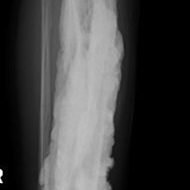
A team of researchers from Germany and Russia, including Vadim Nikulin from the Higher School of Economics, have demonstrated that long contraction of muscles in one hand increases involuntary reaction of the other one. Meanwhile, the time between muscle contractions in both hands decreases. The results of the study have been published in Neuroscience.
Involuntary muscle activity of one limb during voluntary contraction of the other is called mirror activity. In other words, when a human clenches the right hand into a strong fist, the left hand’s muscles react to this action with a minor involuntary activation.
It is believed that during ordinary movements that do not require significant effort the contralateral motor cortex is activated, while the other hemisphere’s motor-relevant regions are in a relatively suppressed state. But with more force applied, the contralateral hemisphere’s motor regions may activate the other hemisphere. This happens via the corpus callosum and induces mirror activity in the contralateral hand.
In healthy humans, mirror activity may be invisible, but is detectable with surface electromyography, which is a method used to register muscles’ electrical activity. In humans with Parkinson’s disease, it becomes pathologic and is called “mirror movement.” These involuntary muscle contractions are clearly noticeable.
Previous studies of mirror activity in healthy humans have shown that as the force of one hand’s contraction increases, the amplitude of the other hand’s involuntary contraction grows. But it has remained unclear how mirror activity changes following repetitive contractions with constant force demands. Furthermore, another parameter of this phenomenon that has not been studied sufficiently is latency, which means the time delay between unilateral voluntary muscle activity and the contralateral involuntary muscular activity.
To analyse these indicators, a team of researchers from Germany and Russia, including Vadim Nikulin, Leading Research Fellow at the HSE Centre for Cognition & Decision Making, conducted an experiment in which participants were asked to pinch a sensor between the thumb and index finger of their right hand. The movement was performed with constant force (80% of maximum voluntary contraction) and at certain intervals. Data on the electrical activity of the right and left hands’ muscles were monitored with electromyography.
Analysis of the experiment’s data showed that following the growing number of voluntary repetitive contractions of the right hand, the amplitude of the left hand’s involuntary contractions grows, and the latency between contractions of the right and the left hand decreases. This demonstrates an inverse relation between time and amplitude.
The researchers note that growing uncontrolled motor activity may be related to participants’ fatigue caused by the considerable amount of movement and effort required during the experiment. This may result in decreasing efficiency of inhibitory mechanisms involved in suppressing involuntarily occurring muscular activity.
Source: Read Full Article





